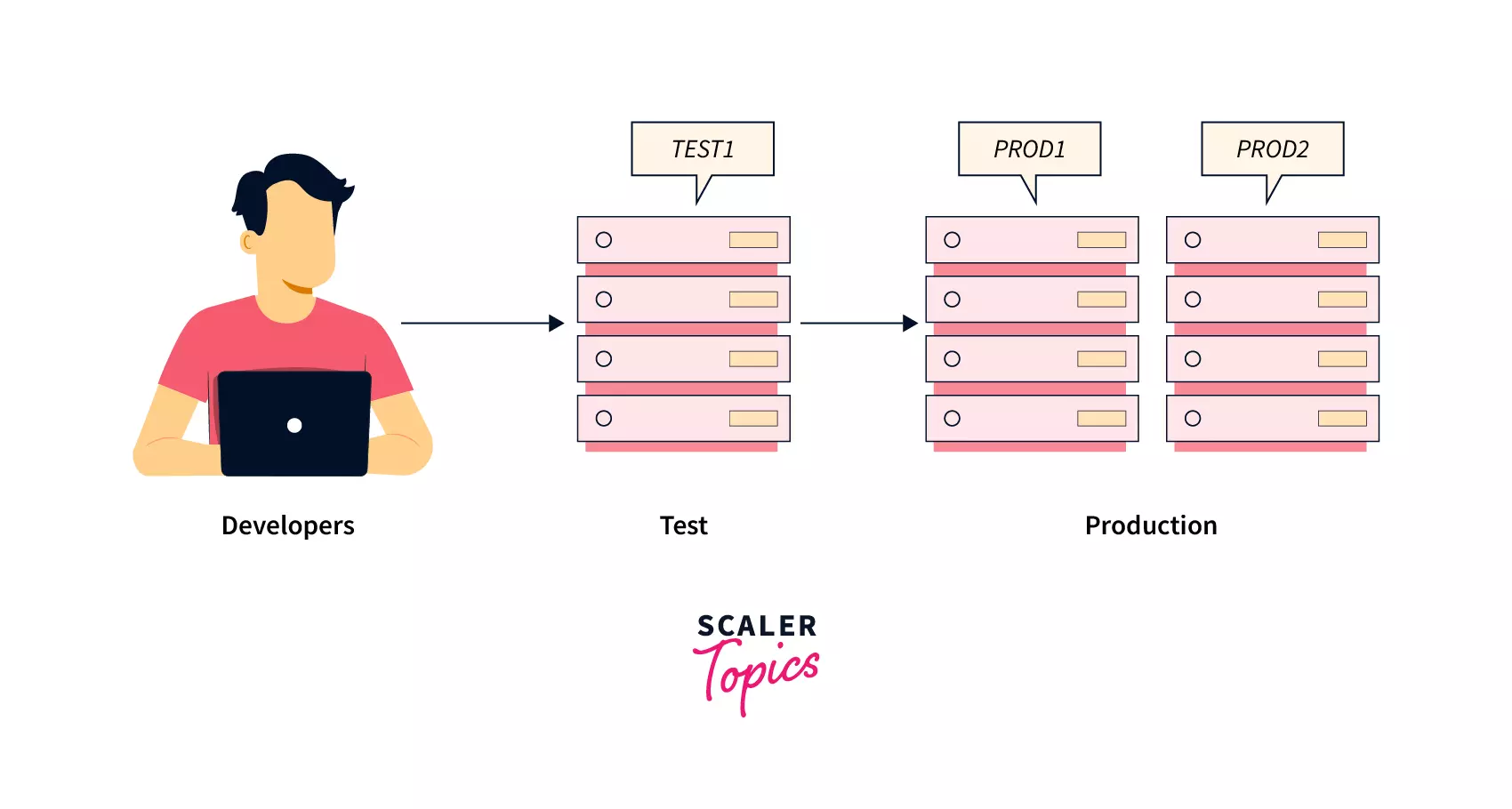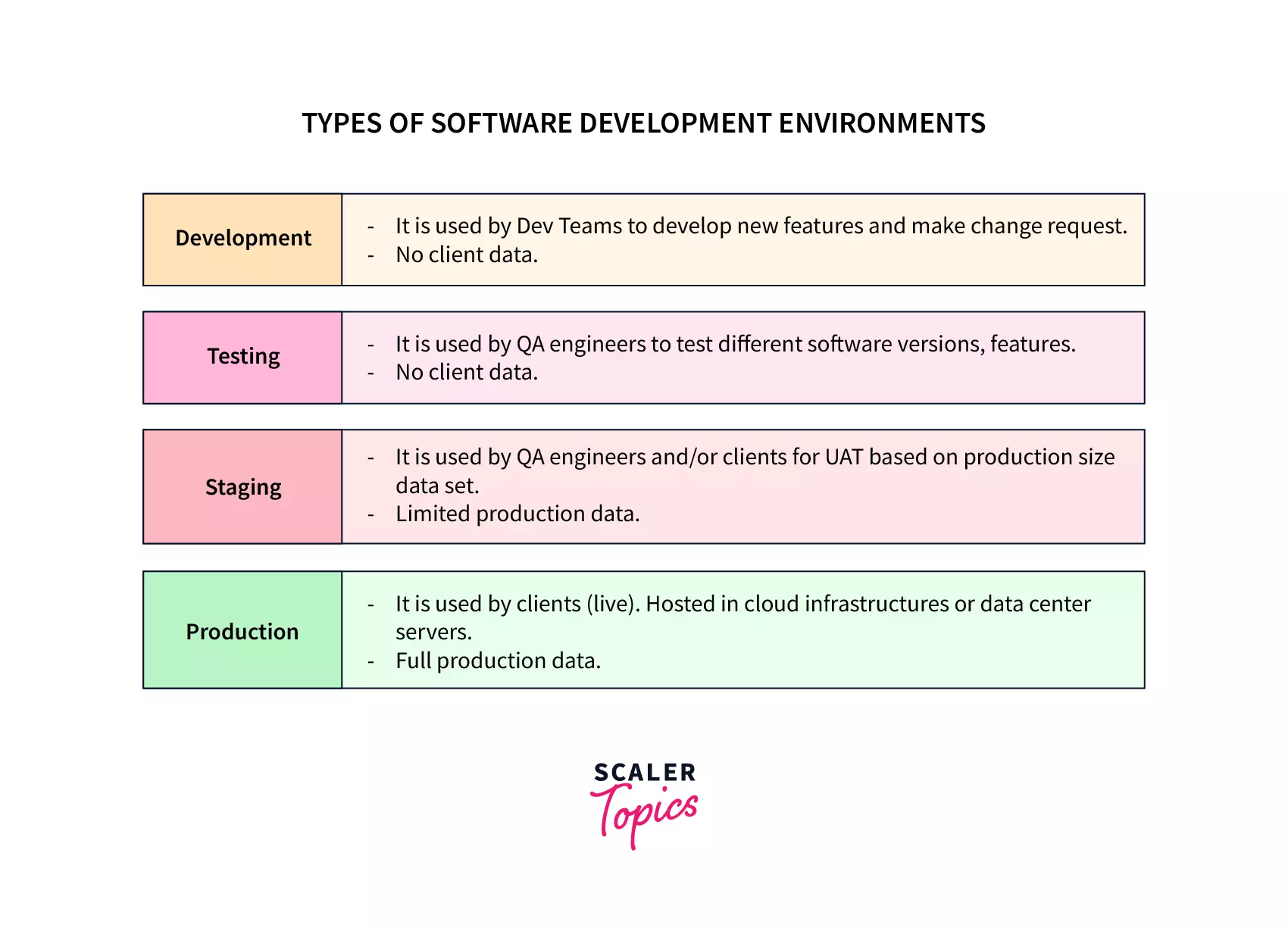STLC - Test Environment Setup
Overview
When we are developing software, we want to be confident that it works well and efficiently before releasing it to the public. One way to ensure this is by creating a dedicated environment for testing the software and this is where the Test Environment Setup comes into the picture. By creating an environment that is similar to the production environment, you can test the software under realistic conditions and catch any potential issues before the software goes live.
What is a Test Environment
Testing software or apps in a test environment setup allows developers to perfect their product before its launch. This simulated environment mirrors the actual product's functionality and contains dummy data, making it ideal for discovering and resolving any errors or glitches before the real version is out. A well-designed test environment can help minimize testing costs and ensure that the software is reliable and of high quality.

Typically, we use four types of testing environments:
- Dev environment: This is where developers first create and test their code. It's like a sandbox where they can experiment without affecting the production environment.
- Testing (QA) environment: After developers finish their work in the Dev environment, the code is moved to the testing environment. This is where the software is thoroughly tested for bugs and other issues.
- Staging environment: Once the software passes the testing phase, it moves to the staging environment. This environment is like a program rehearsal for the production environment, and it allows developers to test the software in a real-world environment.
- Production environment: This is the live environment where the software is finally released to users.

Activities Performed for Test Environment Setup
The activities that are performed for the test environment setup are:
Design Test Environment
The initial stage in establishing a test environment setup is to design it effectively. This phase involves defining the hardware and software specifications for the test environment, such as the versions of operating systems, databases, web servers, and third-party software. It also focuses on deciding the testing tools and frameworks that will be utilized in testing.
Set Up of the Environment
In this step, we focus on configuring the hardware and software components according to the needs or requirements. This would involve installing and setting up the operating system, database management systems, and web servers. It is important to ensure that all components are set up correctly and well-coordinated with each other.
Smoke Testing
Smoke testing is an important step in the process of test environment configuration. It requires executing a predetermined set of tests to confirm that the test environment setup is stable and functioning correctly. Smoke testing typically examines the most significant characteristics and aims to discover any probable problems or bugs in the test environment that may need to be tackled before testing begins.
Process of Software Test Environment Setup
To guarantee an optimal testing environment, multiple critical steps must be taken in its setup process. These steps include installing the server, setting up the network, configuring the PC, fabricating test data, and organizing a bug report system.
-
Setup of Test Server : The initial phase of setting up a test server includes selecting and installing the optimal hardware and software for the purpose, as well as an appropriate operating system and applications.
-
Network : The next phase involves hardware tuning that is routers and switches must be arranged and network parameters like IP addresses and network protocols must be established. The network must also be robust and dependable so that testing can progress without disruptions.
-
Test PC Setup : The test PC setup involves installing the necessary software and configuring the hardware to ensure that the PC can communicate with the test server and the network.
-
Bug Reporting : A bug reporting framework must be implemented to allow testers to report any complications they may encounter while testing such as including reproducing the problem steps and logs or screenshots.
-
Creating Test Data for the Test Environment: The final step in the software test environment setup process is to create test data for the environment. This involves creating test scenarios, test cases, and test data sets that simulate real-world usage of the system covering all possible scenarios to ensure that the system is thoroughly tested.
Test Environment Checklist
A test environment checklist is a document outlining all of the necessary prerequisites for beginning the testing process. This list of requirements ensures the environment is suitable and dependable for testing.
Hardware Requirements
This section includes a list of hardware requirements necessary for setting up the test environment, such as the number and specifications of servers, workstations, and peripherals. It also includes requirements for network infrastructure, storage capacity, and backup and recovery solutions.
Software Requirements
This section discusses the software requirements needed for the test environment, such as the operating system, database management systems, middleware, and application servers. It also includes requirements for testing tools, development tools, and third-party software.
Data Items
This section includes a list of data items or environmental data that must be prepared for the test environment. This includes data sets that simulate real-world usage of the system, test data that covers all possible scenarios, and data related to user accounts and configurations.
Maintenance Tools
This section includes the instruments necessary for the maintenance of the test environment, such as monitoring, performance tuning, and security and compliance tools.
Processes
This section of the checklist specifies the processes needed for the test environment, including test planning, execution, and bug reporting. The aim is to guarantee that all processes are completed consistently to ensure the stability and quality of the test environment.
Conclusion
In this article, we learned about:
- How simulated test environment setup can improve product quality by allowing developers to identify and resolve errors and glitches before launch.
- There are typically four types of testing environments - Dev environment, Testing (QA) environment, Staging environment, and Production environment.
- The process of test environment setup includes designing the environment, setting up components, and performing smoke testing to ensure stability and identify potential issues before testing.
- To create an effective testing environment, steps include selecting proper hardware and software for the test server, configuring the network, setting up the test PC, implementing a bug reporting system, and creating good test data.
- A test environment checklist focuses on hardware and software requirements, data sets, maintenance tools, and processes needed for effective testing.
- Setting up a proper testing environment is essential for ensuring apps work correctly, preventing issues, and reducing costs. By doing so, developers can deliver high-quality products that provide a better experience for end-users.
